SISU Chinese and International Students' Social Practice: Sensing the Pulse of Chinese Modernization in Urban and Rural Areas, Building Bridges of Friendship in a City of Youth Development
From July 2nd to 4th, under the organization of the Communist Youth League Jinshan District Committee, the Youth League Committee of Shanghai International Studies University (SISU), and the School of Chinese Studies and Exchange, a joint SISU student social practice team—comprising Chinese students and international students from Egypt, Morocco, Vietnam, Russia, South Korea, Mongolia, and Nigeria—visited Shanghai's Jinshan District. Their journey included exploring the path of rural revitalization, witnessing industrial transformation, appreciating the elegance of intangible cultural heritage, and listening to the stories of Chinese modernization in Jinshan.

As the first district in Shanghai selected for the national pilot list of Youth Development City initiatives, Jinshan offers a diverse range of thematic explorations—from the cultural charm of intangible heritage to the dynamic progress of rural revitalization and modern industries. This SISU international student social practice program intertwines global perspectives with local engagement, aiming to create a boundaryless cultural learning experience for both Chinese and international students.
Project Title
Journey Through Rural Revitalization, Witness Industrial Transformation, Savor the Beauty of Intangible Cultural Heritage, and Listen to Jinshan's Story of Chinese Modernization
Project Members
Ran Yurong, Xie Shuyao, Zhai Tairong, Chen Rumeng, Wu Mengting, Sun Yu, Qiu Shuyan, Zhou Yuzhen, Zhang Zhiting, Ding Xiaohan, Ma Xiaomei (Egypt), Ye Jingyuan (Morocco), Jun Nan (Vietnam), Fei Hong (Russia), Baolingya (Mongolia), Anya (Nigeria), Lee Siheon (South Korea), Byun Ji-won (South Korea), Kseniia Ocheretianaia (Russia)
Advisors
Chen Tian, Wang Zixian
Scenic Jinshan: Harmony of Tradition and Progress
The joint SISU student delegation began their journey at Caojing Digital Nomad International Village, cruising through the waterway of Caojing Country Park. From the shimmering waters of Reservoir Central River to the lotus-filled OuYu Park, and the repurposed Digital Nomad Library (a renovation of abandoned buildings), they witnessed remote workers collaborating amidst Jiangnan's iconic waterscapes—a unique blend of traditional scenery and modern work-life innovation.
"It's my first time visiting a Chinese village, and I'm completely amazed by its pristine beauty. Reservoir Village under blue skies offers both modern infrastructure and idyllic rural charm, completely reshaping my perception of China's countryside," remarked BYUN Ji-won from South Korea.
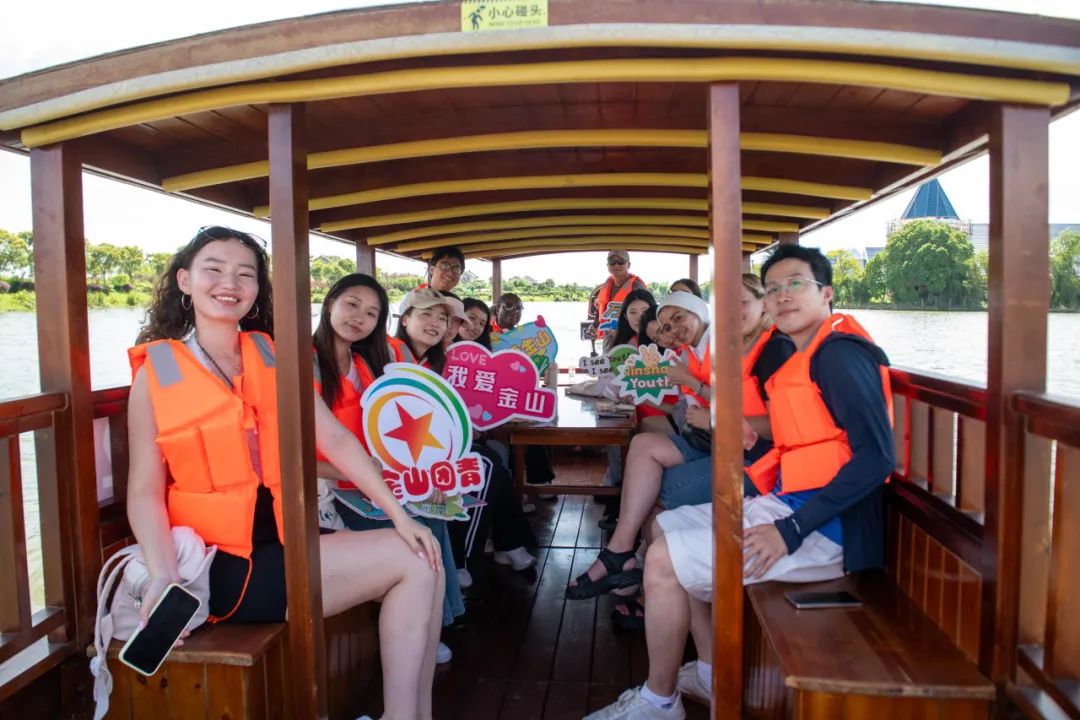
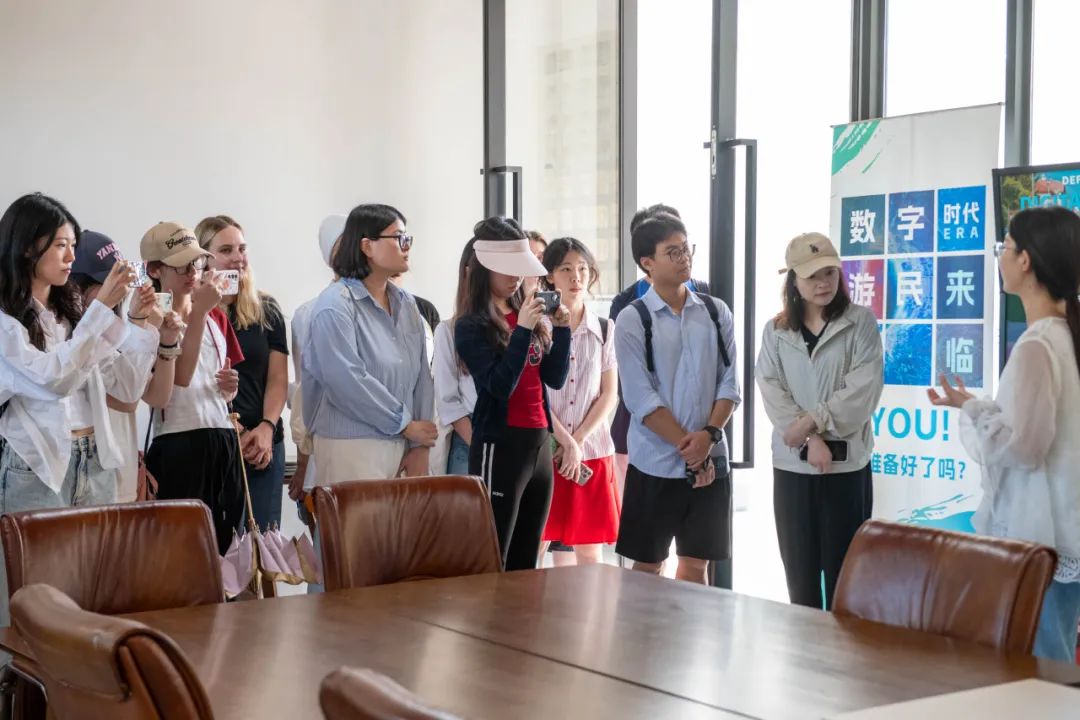
At the East China UAV Base, SISU students observed various drone models - multi-rotor, fixed-wing, and vertical take-off/landing types - gaining comprehensive understanding of their wide applications in low-altitude logistics, agricultural protection, and smart city development. This firsthand experience showcased Jinshan's vibrant emerging industries and technological vitality.
"What amazes me most is how this technology connects to our daily lives," remarked one student. "We're already used to food delivery via mobile apps, but drone delivery for meals and packages? That's the future!" The most fascinating aspects were undoubtedly the practical applications closely tied to their everyday experiences.
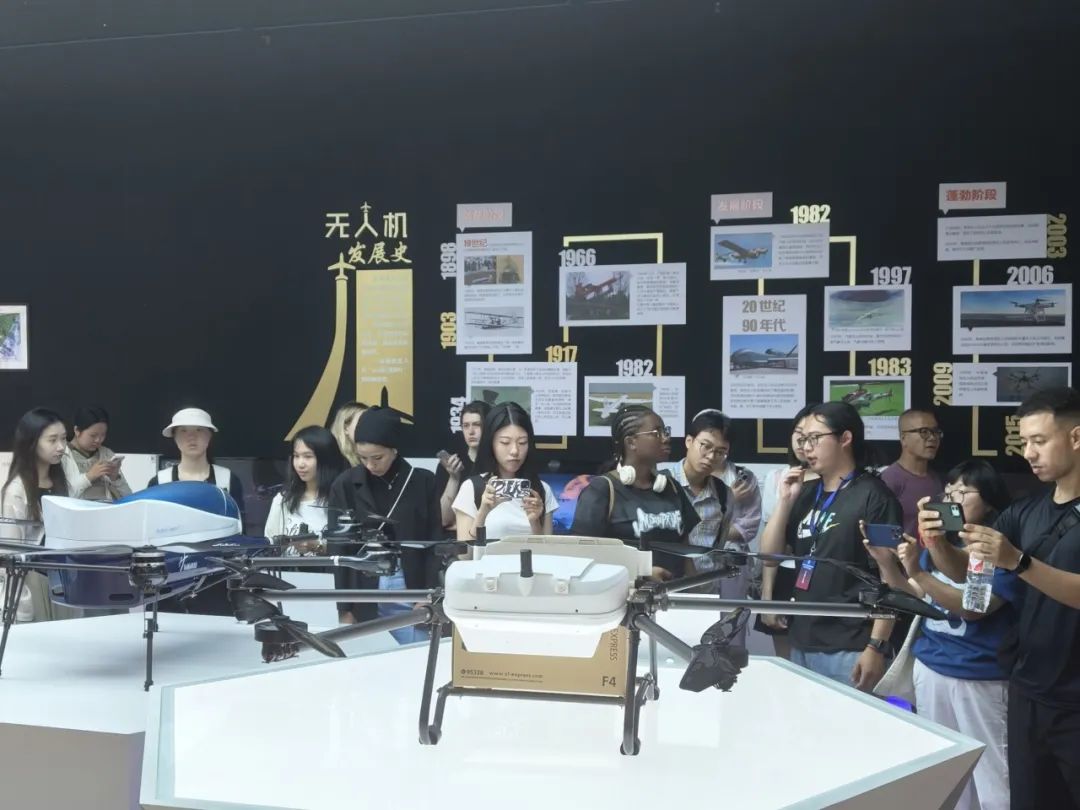
With over 1,500 years of history, Fengjing Ancient Town welcomed SISU students as they wandered along its winding bluestone paths. While maintaining their original architectural charm, the traditional houses and historic buildings have been revitalized into trendy hotspots, breathing new life into this millennia-old water town. At the Ding Cong Art Museum, the students explored over 100 exhibits, gaining insight into the artistic master's "brush-as-sword" creative philosophy. His works—filled with optimism and humanistic warmth—resonated deeply with the young visitors. Among them, Ekeopara Oluebube Augusta from Nigeria was particularly fascinated by the exquisitely crafted ancient Chinese "wedding bed" at the Jiangnan Water Town Marriage Customs Museum, where she lingered to take photos.
"Traveling with classmates from around the world, I witnessed the unique spark where traditional villages meet digital technology at the Digital Nomad International Village. From the East China UAV Base to Fengjing Ancient Town, this journey showed me rural China is not just about pastoral landscapes - it's where innovation, heritage, and youthful energy converge," remarked Ran Yurong, a student of International Chinese Education.
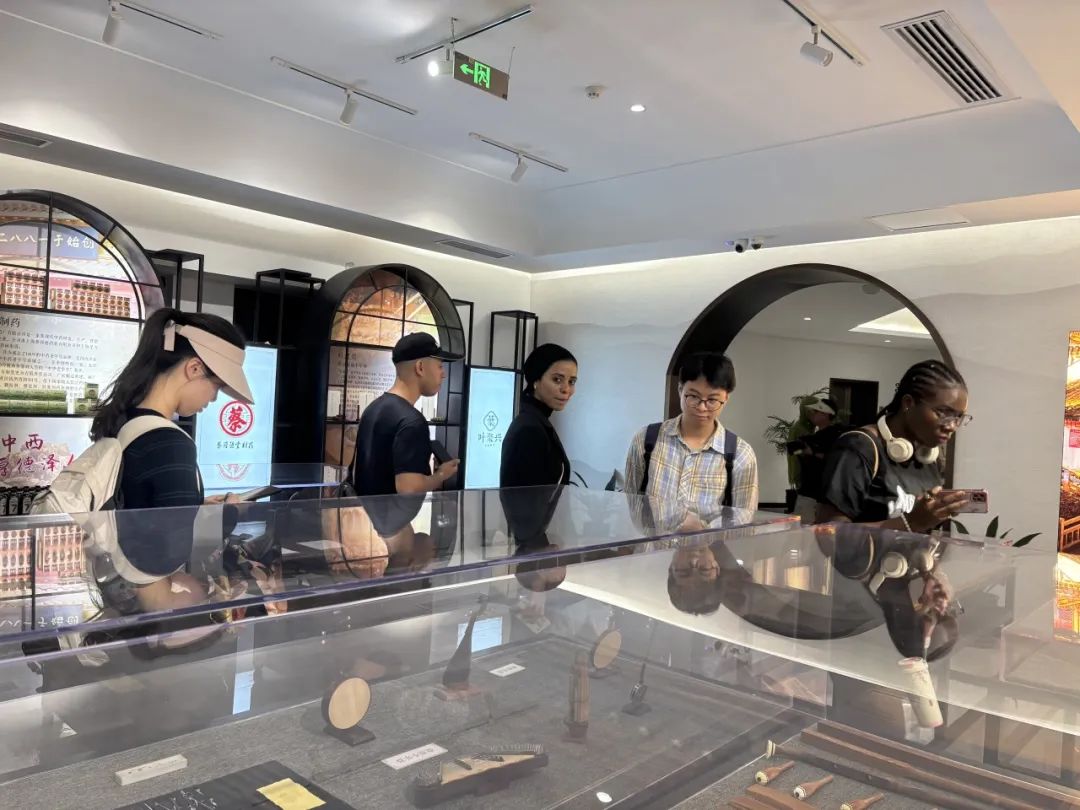
Diving into Jinshan's Cultural Heritage: An Immersive Journey Through Traditional Chinese Arts
Beyond sightseeing, SISU students became "Intangible Cultural Heritage Ambassadors", immersing themselves in hands-on experiences of local traditional arts and cuisine. At the Chinese Farmers' Painting Village, guided by inheritors of this Jinshan intangible heritage, the international participants tried their hands at coloring these distinctive folk artworks. Pouring their impressions of rural China onto paper—from vibrant countryside scenes to imagined depictions of village life—they gained profound insight into the colorful traditions of Jiangnan's agricultural heritage.
"Of all our activities these days, I especially loved coloring the farmers' paintings!" exclaimed Gogulan Valeriia from Russia. The paintings' bold colors, rustic exaggeration, and deep roots in Jiangnan's farming culture captivated all participants.

Hands-on Cultural Immersion: Making Bailong Cake and Dragon Dancing
At the "Little White Dragon Festival" – a cherished Jinshan intangible heritage event in Lüxiang – making and eating Bailong cake alongside vibrant dragon dances formed the heart of the experience. Under the guidance of heritage inheritors, the students became true participants: from preparing ingredients to kneading and steaming, they crafted the traditional glutinous rice cakes with their own hands. As the sweet aroma of steamed rice filled the air and the cakes took shape, the timeless charm of Chinese tradition came alive among the young makers. The dragon dance segment saw participants working in unison to lift and maneuver the undulating dragon body through dynamic movements. This hands-on experience powerfully conveyed the vitality and unifying spirit of Chinese folk culture.
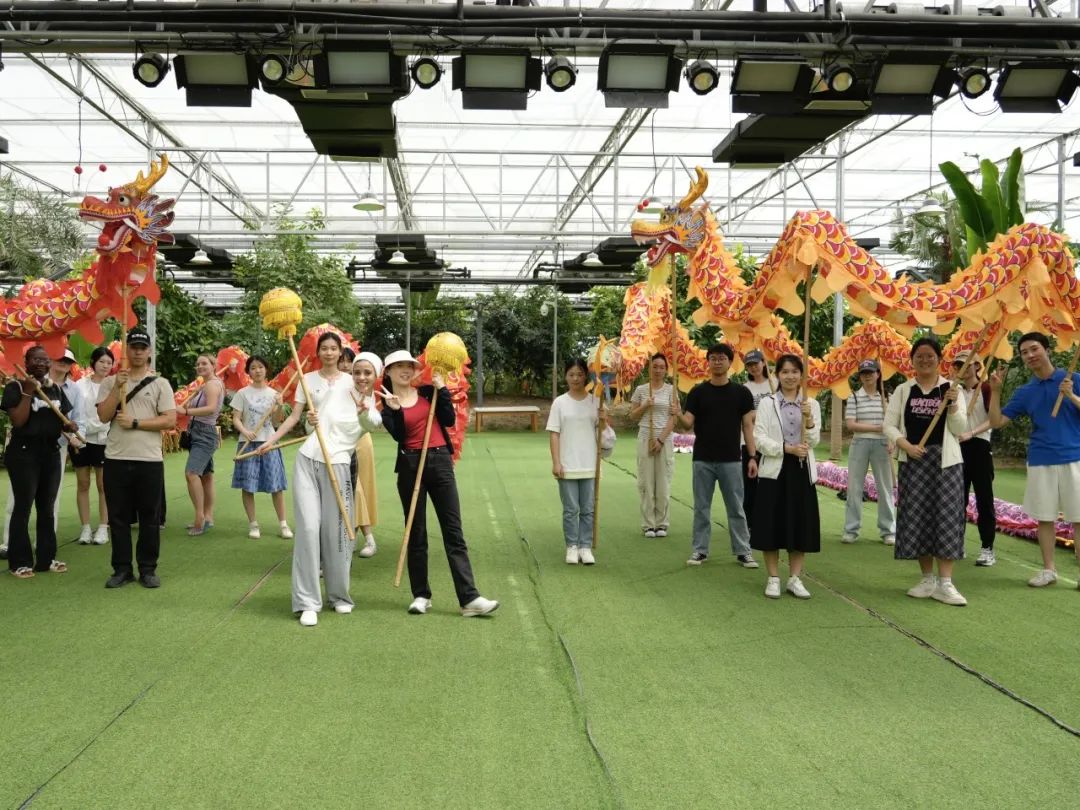

Connecting Traditions & Tech: Building Youth Friendships Across Borders
Through hands-on exploration, SISU's Chinese and international students not only witnessed firsthand the dynamism and appeal of Jinshan's urban transformation and rural revitalization efforts, but also engaged in meaningful interactions with digital nomads and local Jinshan youth.
At the Reservoir Village Herbarium, SISU's Chinese and international students delved into the profound world of traditional Chinese medicine. They discovered the unique growing properties, healing powers, and clinical applications of various medicinal herbs, crafted their own mugwort massage sticks, and even experienced the mysterious art of pulse diagnosis firsthand - each activity revealing new layers of TCM's ancient wisdom.
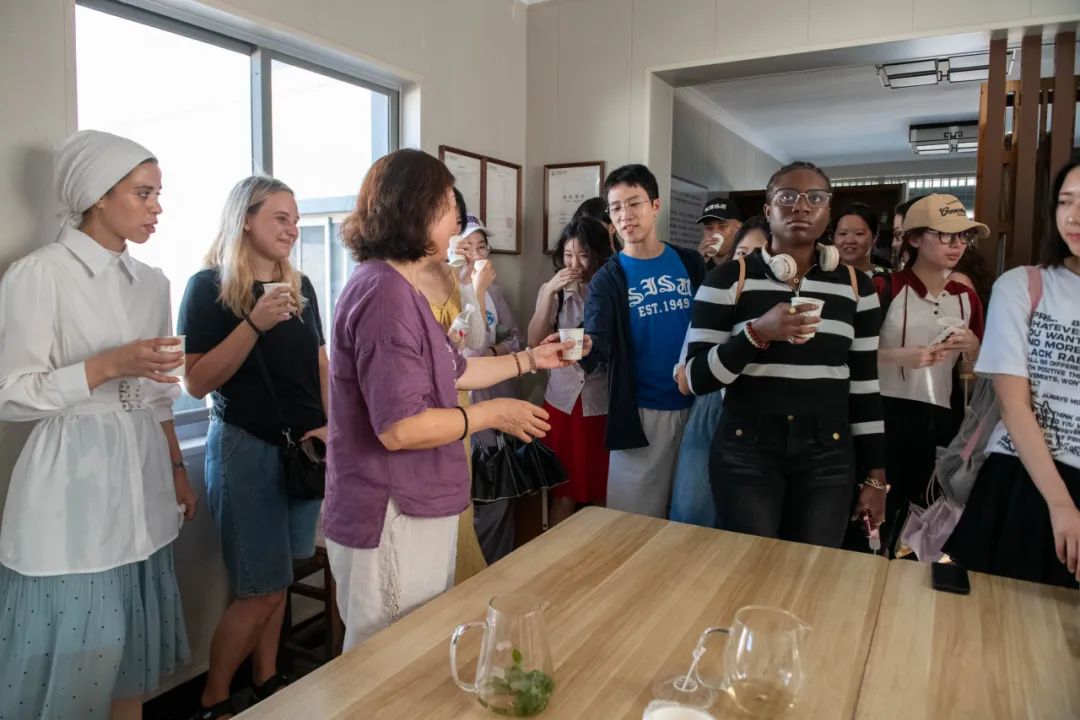
"What fascinated me most was our afternoon in the herb garden," shared Moroccan student Tazarni YASSINE." There was something magical about preparing herbal remedies and watching the doctor perform pulse diagnosis - it felt like touching China's living history."
On the evening of July 3, SISU students and digital nomads engaged in a profound dialogue on cultural innovation and digital lifestyles. Through self-introductions and open sharing, participants exchanged stories about their home countries' traditions, digital living experiences, and personal impressions of China. The lively interactions effortlessly transcended language barriers, as this cross-cultural conversation brought young minds closer together. In this warm atmosphere of mutual understanding, meaningful cultural exchanges naturally blossomed into lasting friendships.
"What moved me most was how genuine and warm everyone felt, despite our different nationalities," shared Wu Mengting, a Chinese student participant.
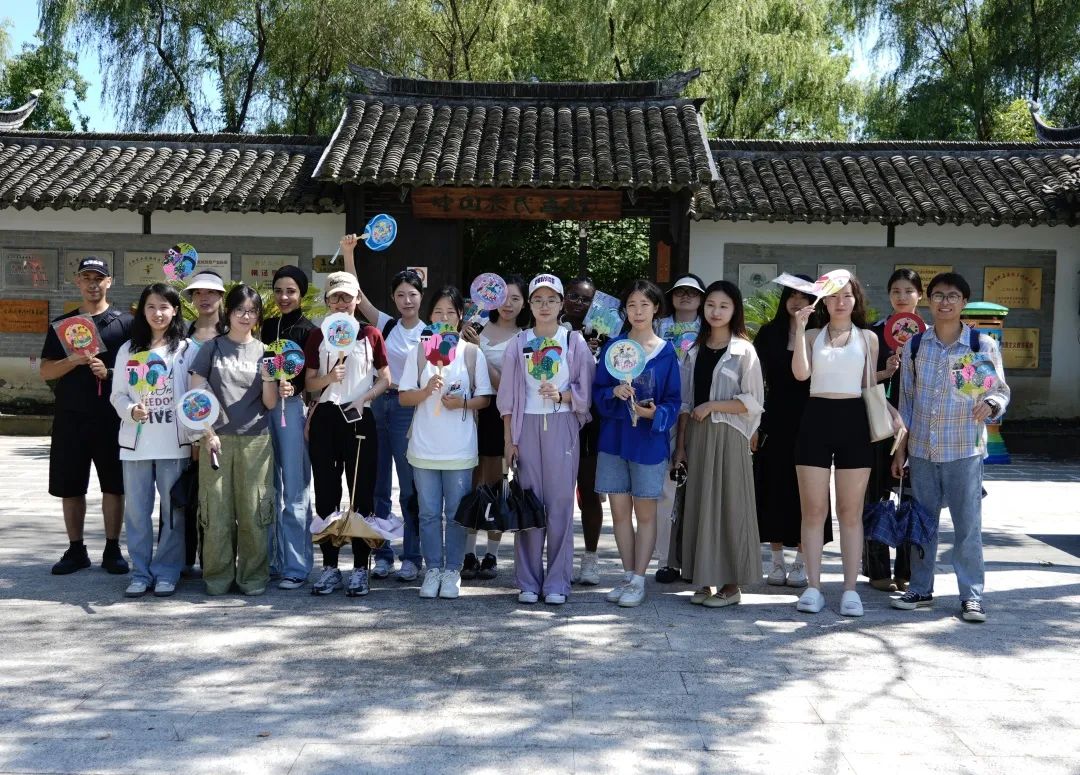
Late that night, SISU students gathered in a circle outside the "Youth Station" - a renovated farmhouse - their phone lights twinkling in the darkness as they sang Chinese pop classics like "Sweet as Honey" and "What the World Gave Me." The impromptu cultural exchange blossomed further as they taught each other Northeast China's yangko dance and traditional Egyptian moves. Under the July stars in Shanghai's countryside, this spontaneous fusion of music and dance created magical chemistry among the diverse group. Though their cultures differed, the genuine human connections and shared joy transcended all boundaries.
"My first visit to a Chinese village completely overturned my expectations - the cleanliness and beauty stunned me," said BYUN Ji-won wistfully. "The only regret is having to say goodbye just as we've grown close. I wish this experience could last longer!"
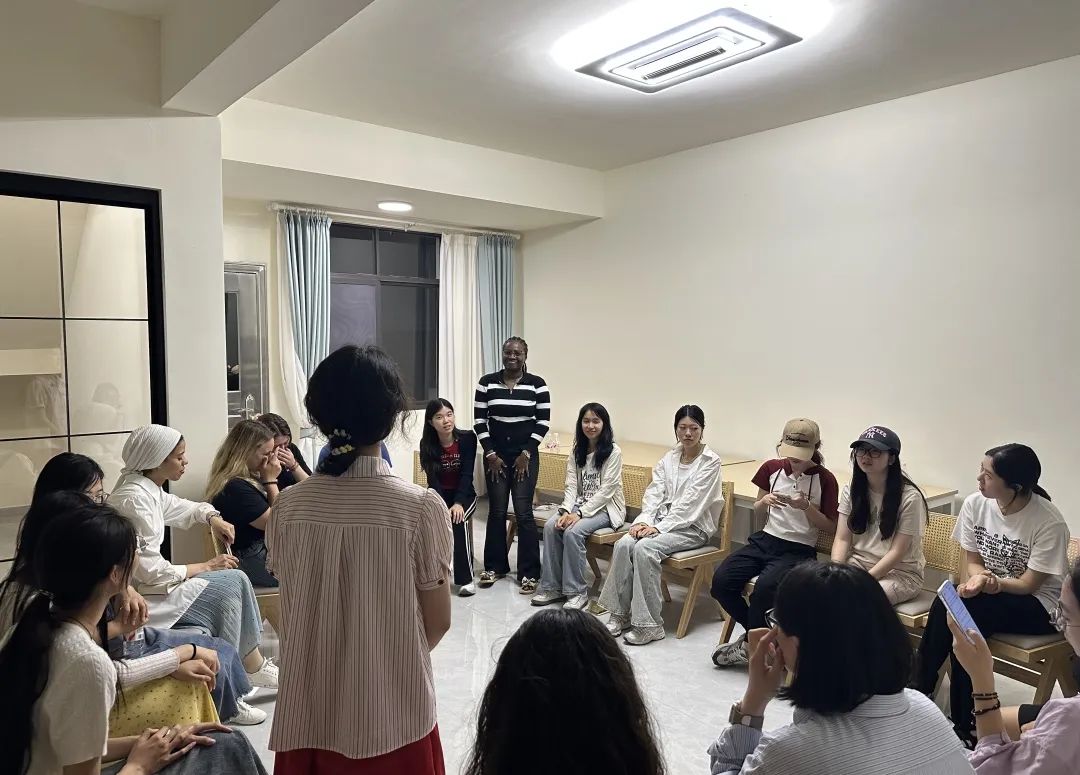
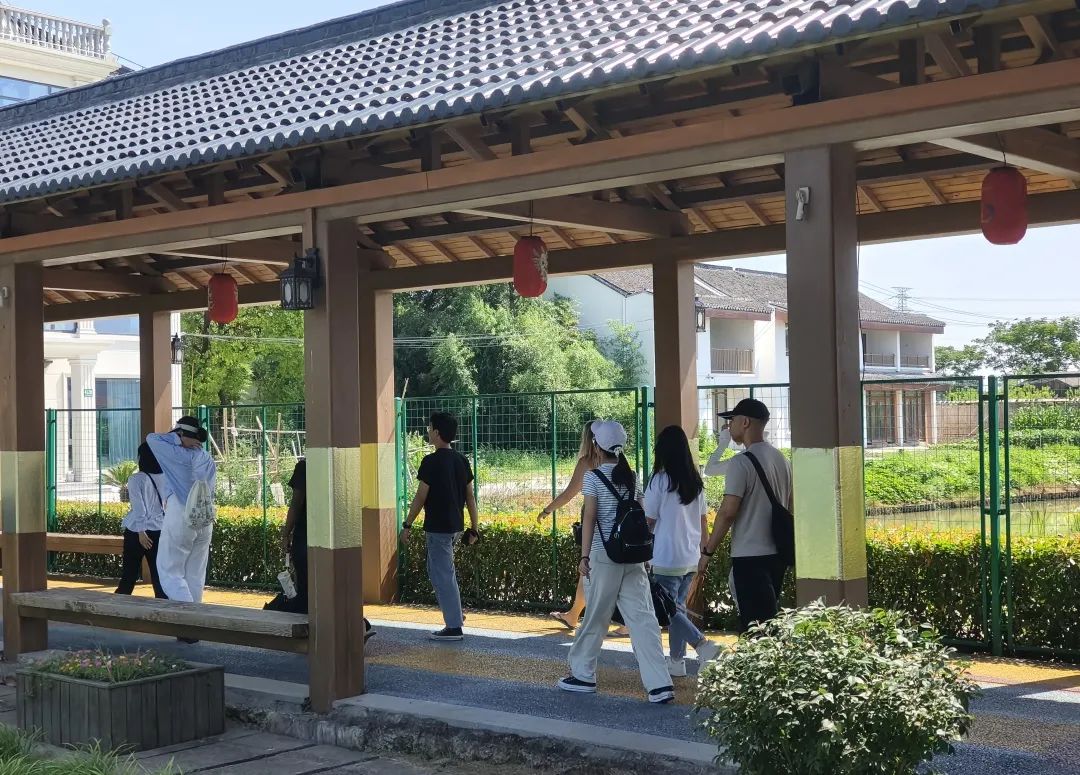
This cross-cultural dialogue bridging urban and rural divides has not only showcased the vibrant tapestry of Jinshan's rural revitalization to the world, but more importantly forged stronger connections and cultural understanding among global youth. As vital participants in China's major-country diplomacy and key narrators of China's stories to the world, young people carry special significance. Moving forward, SISU students will continue serving as cultural bridges - telling China's stories with authenticity, enabling more international youth to experience the boundless opportunities for growth across China's landscape, and witnessing firsthand the dynamic practice of Chinese modernization.
Source: Study at SISU
